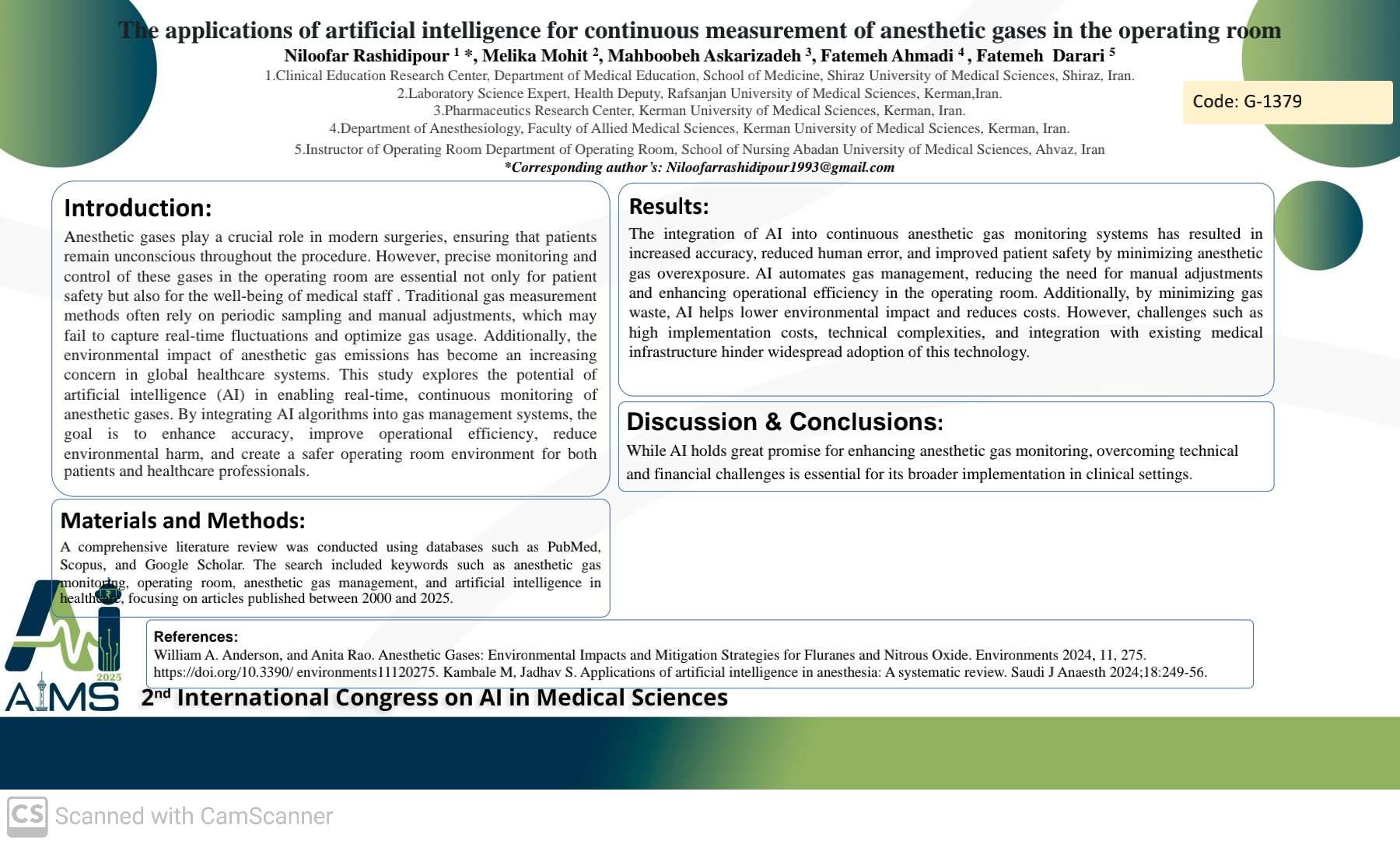The applications of artificial intelligence for continuous measurement of anesthetic gases in the operating room
Code: G-1379
Authors: Niloofar Rashidipour * ℗, Melika Mohit, Mahboobeh Askarizadeh, Fatemeh Ahmadi, Fatemeh Darari
Schedule: Not Scheduled!
Tag: Clinical Decision Support System
Download: Download Poster
Abstract:
Abstract
Background and aims: Anesthetic gases play a crucial role in modern surgeries, ensuring that patients remain unconscious throughout the procedure. However, precise monitoring and control of these gases in the operating room are essential not only for patient safety but also for the well-being of medical staff. Traditional gas measurement methods often rely on periodic sampling and manual adjustments, which may fail to capture real-time fluctuations and optimize gas usage. Additionally, the environmental impact of anesthetic gas emissions has become an increasing concern in global healthcare systems. This study explores the potential of artificial intelligence (AI) in enabling real-time, continuous monitoring of anesthetic gases. By integrating AI algorithms into gas management systems, the goal is to enhance accuracy, improve operational efficiency, reduce environmental harm, and create a safer operating room environment for both patients and healthcare professionals. Method: A comprehensive literature review was conducted using databases such as PubMed, Scopus, and Google Scholar. The search included keywords such as anesthetic gas monitoring, operating room, anesthetic gas management, and artificial intelligence in healthcare, focusing on articles published between 2000 and 2025. Results: The integration of AI into continuous anesthetic gas monitoring systems has resulted in increased accuracy, reduced human error, and improved patient safety by minimizing anesthetic gas overexposure. AI automates gas management, reducing the need for manual adjustments and enhancing operational efficiency in the operating room. Additionally, by minimizing gas waste, AI helps lower environmental impact and reduces costs. However, challenges such as high implementation costs, technical complexities, and integration with existing medical infrastructure hinder widespread adoption of this technology. Conclusion : While AI holds great promise for enhancing anesthetic gas monitoring, overcoming technical and financial challenges is essential for its broader implementation in clinical settings.
Keywords
anesthetic gas monitoring, operating room, Anesthetic
